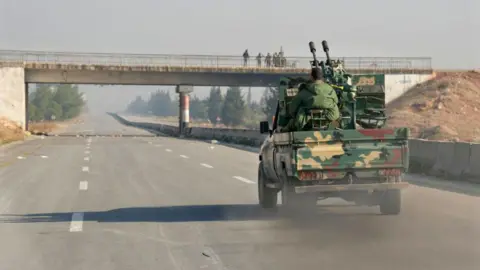 Getty Images
Getty ImagesThe reignited war in Syria is the latest fallout from the turmoil that has gripped the Middle East since the Hamas attacks on Israel on 7 October last year.
The attacks, and Israel’s response, upended the status quo. Events in Syria in the last few days are more proof that the war gripping the Middle East is escalating, not subsiding.
During a decade of war after 2011, Bashar al-Assad’s rule survived because he was prepared to break Syria to save the regime he had inherited from his father.
To do that he relied on powerful allies, Russia, Iran and Lebanese Hezbollah. They intervened on his side against rebel groups that ranged from the jihadist extremists of Islamic State to militias supported by the US and the rich Gulf monarchies.
Now Iran is reeling from severe blows inflicted by Israel, with US support, on its security in the Middle East. Its ally Hezbollah, which used to send its best men to fight for the Assad regime in Syria, has been crippled by Israel’s attacks. Russia has launched air strikes in the last few days against the rebel offensive in Syria – but its military power is almost entirely earmarked to fight the war in Ukraine.
The war in Syria did not end. It dropped out of the place it used to occupy in headline news, partly because of turbulence across the Middle East and beyond, and because it is almost impossible for journalists to get into the country.
In places the war was suspended, or frozen, but Syria is full of unfinished business.
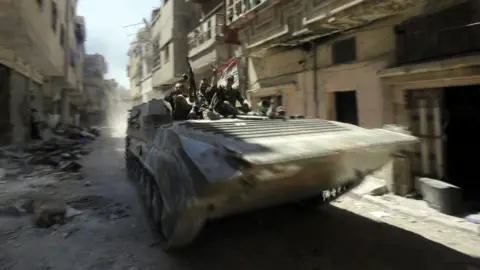 Getty Images
Getty ImagesThe Assad regime has never regained the power it had used to control Syria before 2011, the year of the Arab uprisings, though it still kept a gulag of Syrian prisoners in its jails.
Even so, until the last few days, the regime of President Bashar al-Assad controlled the major cities, their surrounding countryside and the main highways connecting them.
Now a coalition of rebel groups, led by Hayat Tahrir al-Sham (HTS), has broken out of Idlib, the province along the border with Turkey that it controls, and in only a few days since 27 November swept away Syrian troops in a series of “astonishing” events, as one senior international diplomat told me.
Two days into the offensive, they were posting photos of fighters who had taken the ancient citadel of Aleppo, which had been an impregnable base for government troops between 2012 and 2015, when the city was divided between rebels and regime forces.
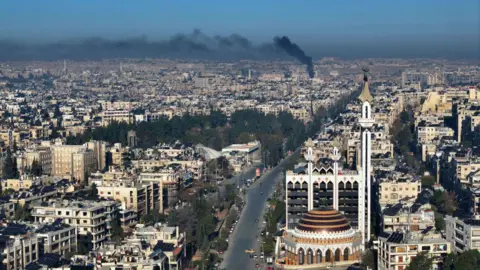 Getty Images
Getty ImagesThe atmosphere in Aleppo seems calm after the rout of government troops. One photo on social media showed uniformed and armed rebel fighters queuing for fried chicken at a fast-food outlet.
HTS has roots in al-Qaeda, though it broke with the group in 2016 and at times has fought its rump loyalists. But HTS is still designated as a terrorist group by the UN Security Council and countries including the US, the European Union, Turkey and the UK. (The Syrian regime calls all its opponents terrorists.)
The leader of HTS, Abu Mohammad al-Jawlani, has a long history as a jihadist leader in Iraq and Syria. In recent years, though, he has moved away from strict jihadist ideology to try to broaden the appeal of his group.
The rebranding is also being used to attract support for the offensive, which HTS calls Operation Repelling the Aggression. That name, and its official announcements, avoid jihadist language and Islamist references.
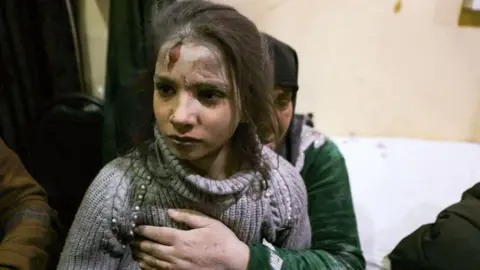 Getty Images
Getty ImagesNeutral language, according to Mina al-Lami, the jihadist media specialist at BBC Monitoring, is designed to distance what’s happening from the jihadist past of HTS and present the offensive as a joint rebel enterprise against the regime.
Syrians are generally repelled by extreme religious rhetoric. As jihadist groups came to dominate the rebellion after pro-democracy demonstrations were crushed after the first year or so of war after 2011, many Syrians either stayed neutral or sided reluctantly with the regime because they feared the murderous jihadist ideology of Islamic State.
The offensive led by HTS comes out of the splintered political landscape of northern Syria. Much of the north-east is controlled by the Syrian Democratic Forces (SDF), a group led by Kurds and supported by the United States, which stations around 900 troops in the area.
Turkey is a big player, controlling borderlands where it has deployed its own regular troops as well as the militias it sponsors. Sleeper cells drawn from the remnants of Islamic State sometimes mount deadly ambushes on roads through the Syrian desert.
Reports from Syria say that the rebel forces have captured significant supplies of military equipment, including helicopters, and are pressing on towards Hama, the next significant city on the road to Damascus.
Without a doubt the regime and its allies will be working to steady themselves and to hit back, especially with air power. The rebels do not have an air force, though in another sign of the way that unmanned aerial vehicles are revolutionising warfare, there are reports that they used a drone to kill a senior regime intelligence official.
The renewed fighting in Syria is causing international alarm. The UN envoy to Syria, Geir Pedersen, issued a statement saying that “the latest developments pose severe risks to civilians and have serious implications for regional and international security… No Syrian party or existing group of actors can resolve the Syrian conflict via military means”.
Pedersen added that there had been “a collective failure to bring about a genuine political process” to implement UN Security Council resolution 2254, which was passed in 2015. That laid out a roadmap for peace, with the principle in the text that “the Syrian people will decide the future of Syria”.
The objective was a future shaped by free elections and a new constitution. But that meant Assad and his family giving up a country that they treated for years as their personal fief. More than half a million dead attest to their determination not to let that happen.
It is too soon to write the Assad regime off. It has a core of genuine support. Some Syrians see it as the least bad option – better than the jihadists who came to dominate the rebellion. But if other anti-Assad groups – and there are many – rise up, his regime will once again be in mortal danger.
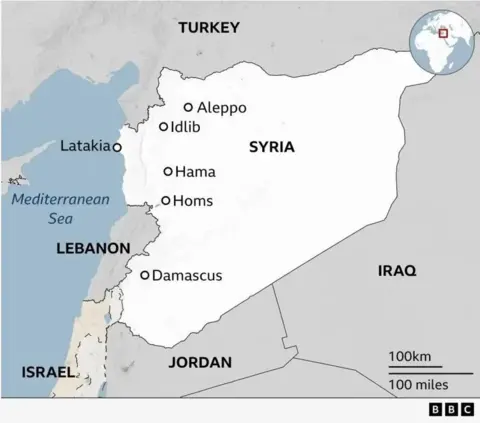
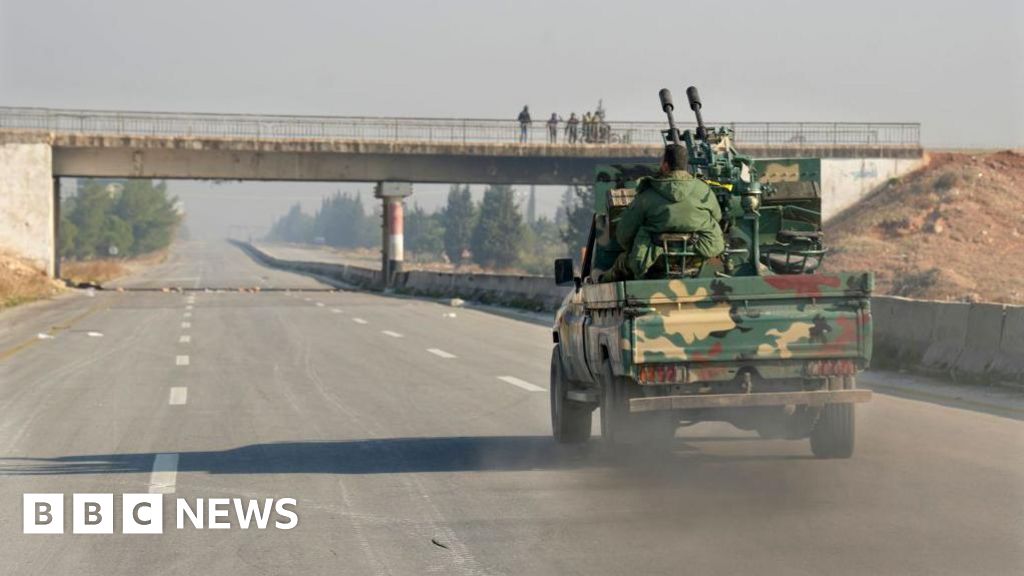

Leave a Reply